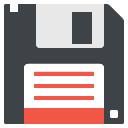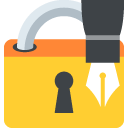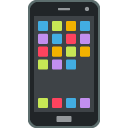What does the Card Index emoji mean?
The 📇 emoji, known as the card index, is a symbol of organization, data storage, and accessibility of information. Reminiscent of a time when physical card indexes were indispensable in libraries, offices, and archives, this emoji evokes the methodical and tactile process of cataloging and retrieving information. The card index system, which involved categorizing information on individual cards and storing them in a way that made them easily accessible, was a precursor to the digital databases we rely on today. The 📇 emoji represents this bridge between the analog and digital worlds, highlighting the evolution of information management and the enduring importance of organization in our lives.
In professional settings, the 📇 emoji is often used to symbolize the organization of data, contacts, or resources. It serves as a visual cue for discussing databases, customer relationship management (CRM) systems, or any form of structured information repository. By including the 📇 emoji in discussions about data organization, professionals can evoke the meticulous and systematic nature of managing information, underscoring the importance of accessibility and order in the business context.
For individuals passionate about organization and productivity, the 📇 emoji can represent personal systems for tracking contacts, tasks, or important documents. It’s a nod to the joy of organizing and the satisfaction derived from having a system that works. Whether used in conversations about personal productivity hacks or in content related to decluttering and organizing, the 📇 emoji adds a layer of visual interest and conveys the idea of structured information management in a personal capacity.
The 📇 emoji also finds relevance in discussions about historical research, genealogy, and archival work. It symbolizes the traditional methods of cataloging and storing records, emphasizing the painstaking work of historians, librarians, and archivists. By using this emoji, individuals can express their appreciation for the depth and breadth of information preserved through card indexes, as well as the transition to digital formats that continue to serve similar purposes in preserving and accessing our collective history.
In the digital age, the 📇 emoji serves as a reminder of the tactile and physical aspects of information management that have largely been replaced by digital systems. It’s a symbol of nostalgia for those who remember using card catalogs and an emblem of the ongoing journey of information storage and retrieval technologies. Despite the shift to digital databases, the principles of organization, categorization, and accessibility remain central to how we manage information today.
Interestingly, the 📇 emoji can also be used creatively to signify the categorization of non-traditional or abstract concepts, such as emotions, memories, or ideas. It can represent the mental filing system we use to process and store our experiences, adding a whimsical or thoughtful dimension to discussions about the mind and memory.
In conclusion, the 📇 emoji is a multifaceted symbol that captures the essence of organization, the history of information management, and the transition from analog to digital systems. Whether used in a professional, personal, historical, or creative context, it serves as a visual reminder of the importance of structured information and the ways in which we strive to make sense of the world around us. Through this simple icon, we celebrate the methods, both old and new, that help us to organize, access, and utilize the vast array of information at our fingertips.























































